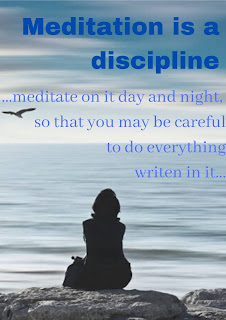Music and The Brain
THE MYSTERY OF SOUND (TMS)
MUSIC AND THE BRAIN
The Human Brain
The human brain is the central organ of the human nervous system, and with the spinal,
cord makes up the central nervous system. It is the command center for the human nervous system.
It consists of the cerebrum, the brain stem and the cerebellum. It receives signals from the body's
sensory organs and outputs information to the muscles.
It is contained in, and protected by, the skull (bones of the head).
It controls most of the activities of the body, processing, integrating, and coordinating the
information it receives from the sense organs, and making decisions as to the instructions sent to
the rest of the body.
The cerebrum is the largest part of the human brain. It is divided into two cerebral hemispheres.
Each having the frontal lobe, the parietal lobe, the temporal lobe and the occipital lobe as shown
in the picture.
Most times we tell people "You have the mind of doing this" or in pidgin "You get mind o"
Well for the sake of time the brain is where the human mind is.
That is where our thoughts come from
The frontal lobe is associated with executive functions including self control, planning, reasoning, and abstract thought, while the occipital lobe is dedicated to vision.
Within each lobe, cortical areas are associated with specific functions, such as
the sensory, motor and association regions.
We'll come to music aspect soon but let's understand the brain a little bit so that can then
associate it with the sound/music
The brain is divided into two hemispheres, i.e the left and the right hemispheres
Now although the left and right hemispheres are broadly similar in shape and function, some
functions are associated with one side, such as language in the left and visual-spatial ability in
the right.
The hemispheres are connected by commissural nerve tracts, the largest being the corpus
callosum.
Interestingly, the human brain has the same basic structure as other mammal brains but it is
however larger in relation to body size than any other brains.
Before I get some people lost, let's not forget that the topic is Music and the brain
Music is primal. It affects all of us, but in a very personal, unique ways.Your interaction with
music is different from mine, but it's still powerful. Our apostle and Prof Elder Elmond Isaiah has
taught us so much about this - the power of music.
Your brain has a reaction when you like or don't like something, and that includes music.
You all agree with me that he deserves all the titles right?
Have you ever wondered why we feel what we feel while listening to music?
- The human brain is the largest brain of all vertebrate relative to body size
- It weighs about 1.5 kilograms
- The average male has a brain volume of 1,27 cubic centimetres
- The average female brain has a volume of 1,131 cubic centimetres
- The brain makes up about 2% of a human body weight
- The cerebrum makes up to 85% of the brains weight
- It contains about 86 million nerve cells (neurons) - the 'gray matter'
- It contains billions of nerve fibers (axons and dendrites) - the 'white matter'
- These neurons are connected by trillions of connections, or synapses
Bearing all this in mind, I ask again, have you ever wondered why we feel what we feel while listening to music? What makes music special and different from the other stimuli that comes to us during our lives?
the answer to these questions lie deep in the way each section of the brain perceives, interprets and processes music.
When listening to any music, it begins with the ears and ends when the music echoes in some way through all the four major lobes of the brain, producing reactions throughout the body, arousing emotions and activating memory systems.
A closer look at the musical tracks in which the music moves in the brain reveals why it has played such a powerful role in our lives for so long.
Starting from the Auditory Cortex and beyond
Music recorded in the brain does not pass through the brain in a regular way. Even though some things happen earlier than others, most happen simultaneously. The various structures involved in understanding music, constantly transfer information to each other, and process information simultaneously to build understanding and a response to music.
However, at the earliest stage, the auditory cortex is the first gate, which is primarily responsible for analyzing the basic features of the music we listen to - such as pitch or volume. It works closely with the cerebellum to break down the flow of musical information into its basic parts: height, hue, spatial location and duration. This information is processed by the higher brain structures that analyze and expand the music into the rich experience we all know.
The cerebellum has close connections with the amygdala - the emotional center of the brain, and the frontal lobe - which is heavily involved in planning and control.
Another system that is very involved in musical processing in the mesolimbic system. It is the system responsible for the feelings of arousal, enjoyment, and transfer of neurotransmitters like dopamine. This is where things become interesting.
Dopamine rush is what we feel when eating a nutritious meal or the feeling when cocaine is introduced into the brain or sexual satisfaction. It is the same feeling that comes up when we listen to a beautiful piece of music. This feeling is caused by activity in the small area of the brain which begins to create a response up to 15 seconds before the emotional peak of the song.
Our strongest emotional reactions are the result of long-term expectations and a sudden solution. Good composers throughout history probably understood the principle long before neurology proved it. They used techniques to extend the expected response, such as constant patterns and variables, rate change and melodic decision making. The longer the artist pulls the change, the stronger the emotional power will be.
Next is The pace and our bodies.
According to many reports from neurological scans, we process rhythms differently from melodies.
The rhythm activates in our brain the part related to movement. Do you know why the feeling a particular song simply causes an irresistible urge to dance? Like my tribal music - Gbagyi local drums for example, one can hardly resist shaking his/her head or tapping the feet when they are playing.
It has also been found that the rhythmic music often causes blood to pump to the muscles in our legs, which is what causes the tapping of the feet to the beat.
Rhythms can also cause change in heart rate and breathing patterns as well as cause these internal cycles to sync with the music. This rhythmic connection indicates that one of the most common functions of using music as a way to create a sense of connection between separate people. Lets not forget that all these are managed and controlled by the BRAIN.
The next is 'Visual Cortex'
Surprisingly, the visual cortex is very active when listening to music. Although science has no precise explanation as to why the parts responsible for for visual processing are so active in our connection with music.
But during my research, I saw possible explanations given by Daniel Levitin, a senior researcher in music psychology. He said it is because listeners imagine movement or imagine that they are watching the show.
Either way, music has a wonderful ability to move us from the inside out, as 'Professor' Elmond has told us this severally.
Next is 'Music and Memory'
Maybe the strongest reason people go back to music is their close connection to memory. Because memories are not stored in the brain at a central location, but spread across neurological pathways, the ability music has to activate such large areas of the brain serves as a very effective stimulus for arousing memories.
The connection of music to emotion gives these musical memories an even greater meaning. In fact, music has been so effective in rejuvenating memories that it has been used to help Alzheimer's patients re-awaken parts of their self.
Listening to music provides a one-of-a-kind mental training. The way it activates all four lobes of the brain makes it an amazing tool for building and strengthening neural circuits in the brain, and how it fits into the emotional centers makes it a particularly powerful driving force.
HOW THE BRAIN RESPONDS TO MUSIC
- Frontal Lobe: it is used in thinking, decision-making and planning. The frontal lobe is the most important to being a human. We have a big frontal lobe compared to other animals. By listening to music, we can enhance its functions.
- Temporal Lobe: processes what we hear. We use the language center to appreciate music, which spans both sides of the brain, though language and words are interpreted in the left hemisphere while music and sound are interpreted in the right hemisphere.
- Broca's Area: enables us to produce speech. We use this part of the brain to express music. Playing an instrument may improve you ability to communicate better.
- Wernicke's Area: comprehends written and spoken language. We use this part of the brain to analyze and enjoy music.
- Occipital Lobe: processes what we see. Professional musicians use the occipital cortex, which is the visual cortex when they listen to music, while laypersons use the temporal lobe - the auditory and language center. This suggests that [musicians] might visualize a music score when they are listening to music.
- Cerebellum: cordinates movement and stores physical memory. An Alzheimer patient, even if he doesn't recognize his wife, could still play the piano if he learned it when he was young because playing has become a muscle memory. Those memories in the cerebellum never fade out. This is according to Sugaya.
- Nucleus Accumbens: seeks pleasure and reward, and plays a big role in addiction, as it releases the neurotransmitter dopamine. Music can be a drug - very addictive drug because it's also acting on the brain as illegal drugs. Music increases dopamine in the nucleus accumbence, similar to cocaine.
- Amygdala: processes and triggers emotions. Music can control your fear, make you ready to fight and increase pleasure. When you feel shivers go down you spine, the amygdala is activated.
- Hippocampus: produces and retrieves memories, regulates emotional response and helps us navigate. Considered the central processing unit of the brain, it is one of the first regions of the brain to be affected by Alzheimer's disease, leading to to confusion and memory loss. Music may increase neurogenesis in the hippocampus, allowing production of new neurons and improving memory.
- Hypothalamus: maintains the body's status quo, links the endocrine and nervous systems, and produces and releases essential hormones and chemicals that regulate thirst, appetite, sleep, mood, heart rate, body temperature, metabolism, growth and sex drive - to name just a few. If you play Mozart for example, heart rate and blood pressure reduces.
- Corpus Callosum: enables the left and right hemispheres of the brain to communicate, allowing for coordinated body movement as well as complex thoughts that require logic (left side) and intuition (right side). As a musician, you want to have the right and left side of the brain in coordination, so they 'talk' to each other. This allows pianists to translate notes on a sheet to the keys theirfingers hit to produce music.
- Putamen: processes rhythm and regulates body movement and coordination. Music can increase dopamine in this area, and increase our response to rhythm. By doing this, music temporarily stops the symptoms of Parkinson's disease. Rhythmic music, for example has been used to help Parkinson's patients function, such as getting up and down, and even walking,because Parkinson's patients need assistance in moving. Unfortunately, after the music stops, the pathology comes back.





















Comments
Post a Comment